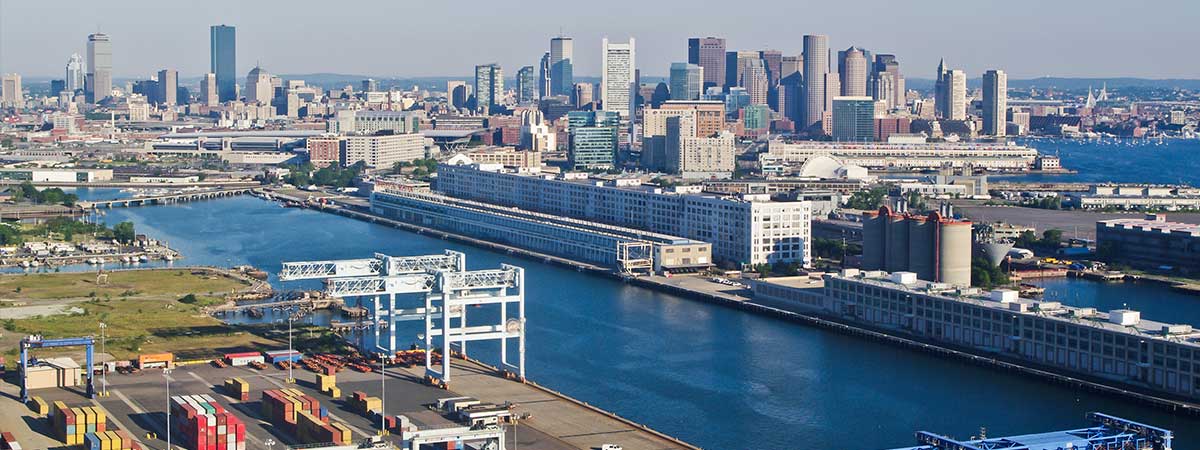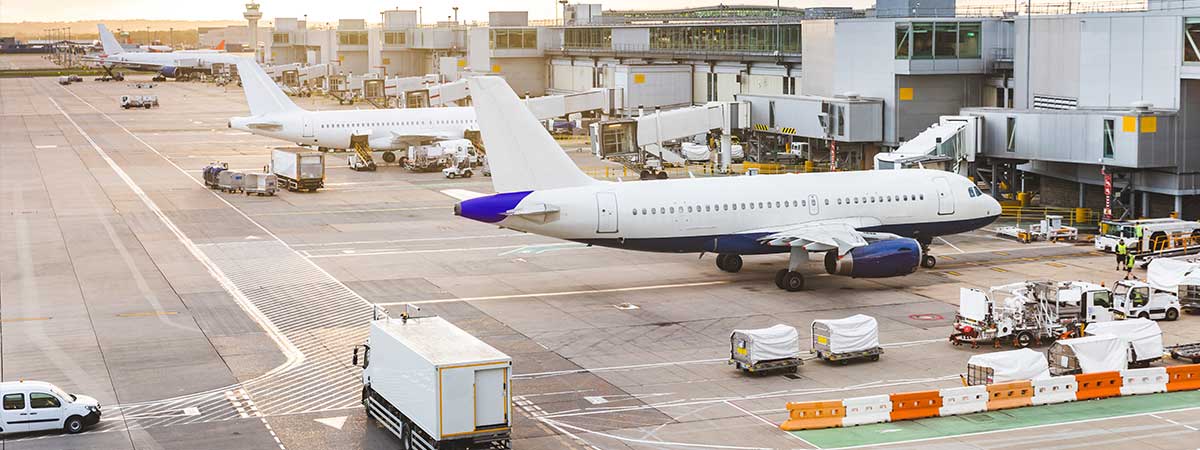General Edward Lawrence Logan International Airport (BOS)
General Edward Lawrence Logan International Airport (Logan) plays a critical role in passenger and freight networks across the northeast, and serves as the largest airport in New England. Operated by the Massachusetts Port Authority (MassPort), Logan handled approximately 600 million pounds of cargo in 2016, ranking 20th in the United States despite being the 152nd largest public-use airport in terms of surface area (2,384 acres). Although the COVID-19 pandemic caused an unprecedented disruption to global supply chains, freight service is increasing; total airport freight activity for July 2021 is up 72% from July 2020 and up 28% year-to-date from 2020. Around half of Logan’s air freight is handled by integrated logistics companies, while the other half is handled by passenger airlines that carry belly freight. While FedEx carries roughly 38% of all cargo entering Logan, UPS and DHL also enjoy a significant presence. Although air freight only accounts for 0.02% of Massachusetts freight movement by weight, it accounts for 6.9% by value, signifying the role of air freight in conveying items like pharmaceuticals, electronics, and precision instruments to supply the region’s robust life sciences cluster. Logan’s close proximity to the 495/MetroWest region and accessibility by road and rail allows for the seamless flow of goods to and from the region.
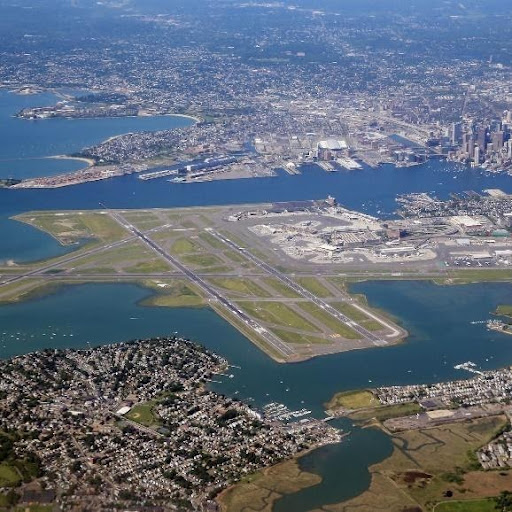
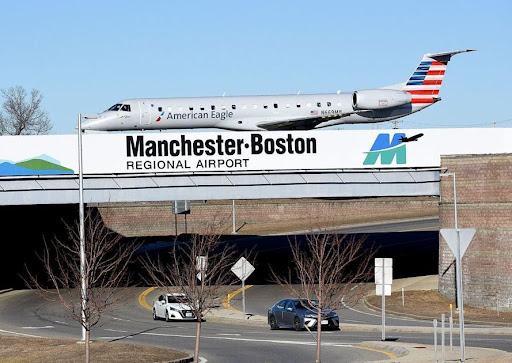
Manchester–Boston Regional Airport (MHT)
Often referred to as Manchester Airport, Manchester-Boston Regional Airport is the primary airport in the state of New Hampshire. Located three miles south of Manchester’s central business district, and just 19 minutes from the Massachusetts border, the airport has two paved runways and offers 21 T-hangers, 5 conventional hangers, and 59 tie-downs for aircraft storage. Manchester Airport facilitates commercial, corporate, charter, and extensive cargo aircraft services. As New England’s third-largest cargo airport, it processes more air cargo each year than all other regional airports in New England combined. Manchester Airport is the central air cargo hub for UPS and FedEx for northern New England. Wiggins Airways, SWA Cargo, and Ameriflight also operate out of Manchester Airport. Connected by Route 3 and Interstate-93, Manchester-Boston Regional Airport can expeditiously service the northern periphery of the 495/MetroWest region.
Rhode Island T. F. Green International Airport (PVD)
Located in Warwick, Rhode Island, and just 20 minutes from the Massachusetts border, T.F Green is the largest and busiest airport in the state. The airport serviced 3.9 million passengers in 2019 and currently provides non-stop services to 22 destinations. T.F. Green handled 27 million pounds of cargo in 2014. FedEx and UPS are T.F Green’s primary freight operators, accounting for a combined 92.6% of export volumes and 95% of import volumes. T.F. Green hosts cargo processing facilities on-site and within the immediate vicinity of the airport. With direct access to Providence and Boston via Interstate-95, T.F. Green can expeditiously service the southern periphery of the 495/MetroWest region.
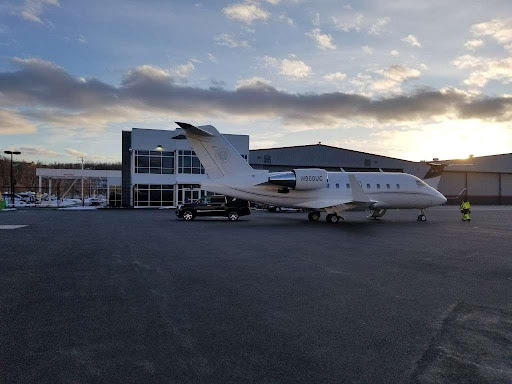
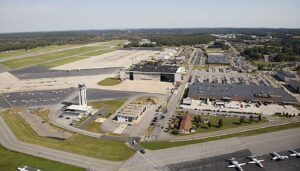
L.G. Hanscom Field (BED)
Operated by MassPort, L.G. Hanscom Field is the second busiest airport in Massachusetts. Located just outside the 495/MetroWest region in Bedford, Massachusetts, The airport operates two runways and an ample stock of hanger space and storage facilities. Hanscom Field primarily caters to corporate aviation, private charters, and light cargo. Hanscom Field has notably become a hub for the conveyance of small, time-critical express parcels. Services like AirNet II, which specializes in the transportation of hazardous materials, utilize Hanscom to serve businesses in the 495/MetroWest region. Hanscom’s close proximity to Boston and the 495/MetroWest region has made Hanscom Field particularly attractive to business executives looking to visit the numerous manufacturing and R&D facilities, laboratories, and corporate headquarters located in our region.
Worcester Regional Airport (ORH)
Operated by MassPort, the airport operates two runways and recently installed a Category III Instrument Landing System to permit aircraft to land in any visibility. Worcester Regional Airport primarily caters to general and commercial aviation, with capacity for expanded freight operations. Euro-American Logistics maintains a 40,000 sq. ft. cGMP compliant storage facility with 10,000 sq. ft. of dual temperature-controlled refrigeration at its headquarters in Worcester. This storage facility directly supports the robust life sciences sector in the MetroWest region and statewide. MassPort is currently exploring opportunities to increase air freight capacity at Worcester Regional Airport. The ongoing expansion of Terminal E at Logan Airport, geared predominantly towards passenger service operations, may shift a portion of dedicated air freight services towards Worcester Regional Airport over time.
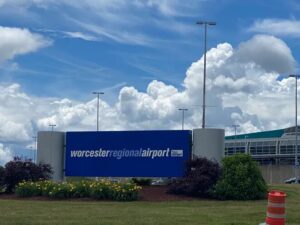
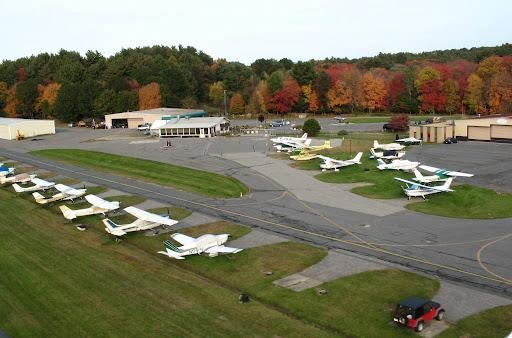
Minute Man Airfield (6B6)
Minute Man Airfield is a privately owned, public-use airport in Stow, Massachusetts containing a 2000 ft. long paved runway with a parallel taxiway, tie-downs for 50 planes, AVGAS pumps, a second-cross wind runway, and hanger space. Minute Man Airfield best accommodates private charter flights and small cargo aircrafts. Located within the MetroWest region, Minute Man Airfield could be utilized for on-demand aviation services, including express delivery of small, time-sensitive parcels.
New Bedford Regional Airport (EWB)
New Bedford Regional Airport is a public-use, commercial-service airport that is municipally owned and operated. The airport has a 5,400 ft. primary runway and handles 53,507 operations annually. Cape Air and Southern Airways Express operate out of New Bedford Regional Airport, primarily catering to regional island destinations such as Nantucket. Cape Air provides belly freight services – transporting non-hazardous cargo to Nantucket, Hyannis, and Puerto Rico.
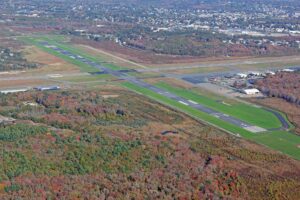
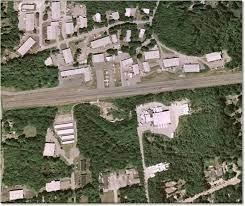
Hopedale Airport Industrial Park (1B6)
Hopedale Airport Industrial Park is a mixed-use development complex consisting of over 40 industrial, storage, and small office units, with a 3,200 ft. runway and tie-down space dividing the property. Transient general aviation and air taxi services account for 50% of aircraft operations. Hopedale Airport Industrial Park could be utilized for on-demand aviation services, including express delivery of small, time-sensitive parcels.
Fitchburg Municipal Airport (FIT)
Fitchburg Municipal Airport is a public general aviation airport located three miles southeast of the city’s commercial district and Commuter Rail station. With significant financial backing from the FAA, the airport recently underwent expansion efforts that include a newly paved 5001 ft. runway suitable for corporate aviation, a 24-hour self-service fueling system, and 60 acres of developable land intended for new hangars or an Airport Business Park. Fitchburg Municipal Airport can expeditiously service the northern periphery of the 495/MetroWest region.
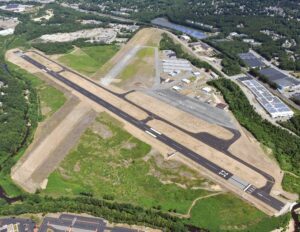
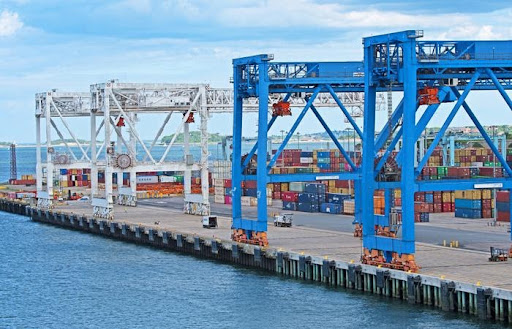
Conley Terminal
As part of the Port of Boston, the Conley Terminal serves as the main artery for maritime cargo entering Massachusetts. The terminal supports $8.2 billion in economic activity annually, with over 247,000 Twenty-Foot Equivalent Units (TEUs) passing through the port in Fiscal Year 2021. The world’s leading shipping lines including MSC, COSCO, OOCL, Evergreen, and CMA CGM utilize the Conley Terminal on a weekly basis. Conley Terminal offers significantly faster truck turn times (dual transactions) than the Port of New York and New Jersey at an average of 30 minutes. Such efficiency connects Boston and the surrounding 495/MetroWest region to the global market with unparalleled speed. Modernization efforts scheduled to be completed by the Fall of 2021 will allow the port to accommodate 14,000 TEU vessels.
The MassPort Marine Terminal
Under lease agreement to MassPort until 2070, the Marine Terminal is located within the South Boston Designated Port Area (DPA) and contains a deep-water berth. As part of the Port of Boston, the Marine Terminal is strategically envisaged by MassPort to accommodate the future loading and discharging of freestanding heavy machinery by barge, which is not possible at Conley Terminal. A deal struck between MassPort and road salt supplier Eastern Salt in early 2021 will tap private-sector funds expended towards the restoration of the North Jetty dock for further industrial usage.
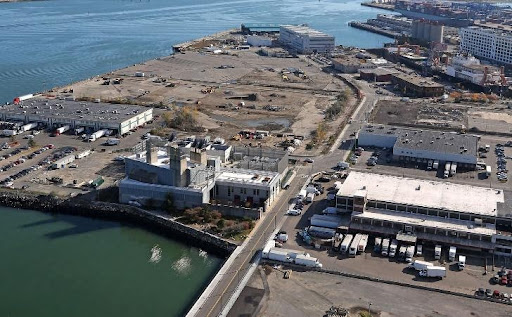
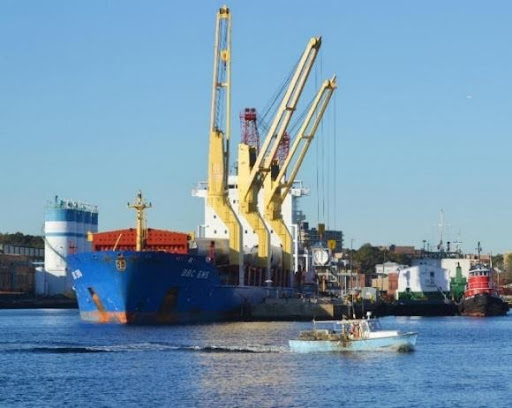
The Port of Fall River
Operated by Fall River Line Pier INC, the port serves as a major hub for the commercial fishing industry and flow of goods such as household commodities. The port has two deep-water berths that can accommodate modern cargo vessels, fishing boats, and cruise ships. Within the Terminal is a 96,000 sq. ft. storage building that is adjacent to several acres of open space. The port has direct on-dock connections to three tracks for rail freight and seamless access to Route 24 and I-195. Currently, a large portion of activity for the port includes the flow of household goods to and from South America, West Africa, and the Caribbean.
The Port of Providence
Operated by ProvPort Inc., the Port of Providence is New England’s second largest deep-water port. The Port of Providence has 4,200 feet of berthing space, 130,000 sq. ft. of covered storage, and over 20 acres of open lay-down area. There is on-dock rail, indoor rail, and alongside rail at the open lay-down area. Three rail spurs connect nearby railroad facilities with the Port of Providence, which is located one mile away from Interstate-95. Serving the New England region at large, the Port of Providence provides the 495/MetroWest region with access to the international market.
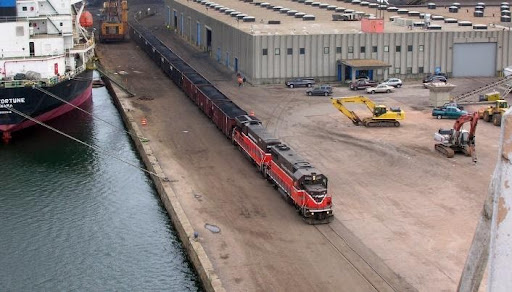
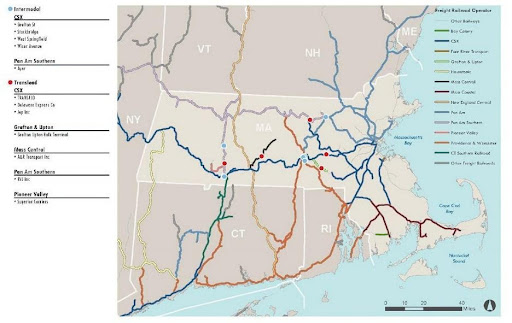
Rail Infrastructure
Massachusetts has a robust rail network that allows freight to be transported across the entire New England region. These rail lines are supported by a series of intermodal and transload rail terminals across the state. Goods arriving by rail are often trucked from rail terminals in Central Massachusetts to distribution centers on the I-495 belt. The Boston line has a weight rating of 315k and allows for double-stacking. The remainder of the rail network is rated at 286k and 263k. The 495/MetroWest region’s proximity to multiple rail terminals give it expeditious access to the state’s rail network.
Highway and Trucking Infrastructure
Massachusetts has a robust road network including five major Interstate corridors: I-84, I-90, I-91, I-93, and I-95; and seven auxiliary routes: I-190, I-290, I-291, I-391, I-295, I-395, and I-495. Additionally, there are several non-Interstate corridors: US-3, US-6, MA-2, MA-3, MA-24, MA-128, MA-146. Massachusetts also hosts a number of full and limited-service truck stops. The 495/MetroWest Partnership consistently advocates for regional roadway improvement efforts, and was a major catalyst to securing the reconfiguration of the I-495/I-90 interchange, scheduled to get underway in 2022.
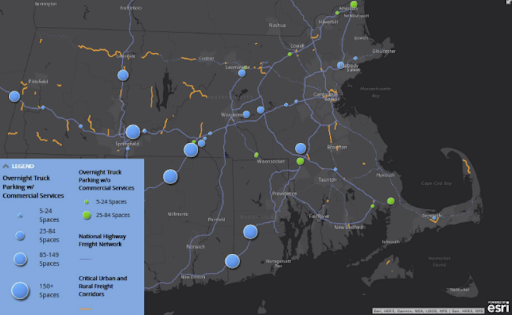
General Edward Lawrence Logan International Airport (BOS)
General Edward Lawrence Logan International Airport (Logan) plays a critical role in passenger and freight networks across the northeast, and serves as the largest airport in New England. Operated by the Massachusetts Port Authority (MassPort), Logan handled approximately 600 million pounds of cargo in 2016, ranking 20th in the United States despite being the 152nd largest public-use airport in terms of surface area (2,384 acres). Although the COVID-19 pandemic caused an unprecedented disruption to global supply chains, freight service is increasing; total airport freight activity for July 2021 is up 72% from July 2020 and up 28% year-to-date from 2020. Around half of Logan’s air freight is handled by integrated logistics companies, while the other half is handled by passenger airlines that carry belly freight. While FedEx carries roughly 38% of all cargo entering Logan, UPS and DHL also enjoy a significant presence. Although air freight only accounts for 0.02% of Massachusetts freight movement by weight, it accounts for 6.9% by value, signifying the role of air freight in conveying items like pharmaceuticals, electronics, and precision instruments to supply the region’s robust life sciences cluster. Logan’s close proximity to the 495/MetroWest region and accessibility by road and rail allows for the seamless flow of goods to and from the region.

Manchester–Boston Regional Airport (MHT)
Often referred to as Manchester Airport, Manchester-Boston Regional Airport is the primary airport in the state of New Hampshire. Located three miles south of Manchester’s central business district, and just 19 minutes from the Massachusetts border, the airport has two paved runways and offers 21 T-hangers, 5 conventional hangers, and 59 tie-downs for aircraft storage. Manchester Airport facilitates commercial, corporate, charter, and extensive cargo aircraft services. As New England’s third-largest cargo airport, it processes more air cargo each year than all other regional airports in New England combined. Manchester Airport is the central air cargo hub for UPS and FedEx for northern New England. Wiggins Airways, SWA Cargo, and Ameriflight also operate out of Manchester Airport. Connected by Route 3 and Interstate-93, Manchester-Boston Regional Airport can expeditiously service the northern periphery of the 495/MetroWest region.

Rhode Island T. F. Green International Airport (PVD)
Located in Warwick, Rhode Island, and just 20 minutes from the Massachusetts border, T.F Green is the largest and busiest airport in the state. The airport serviced 3.9 million passengers in 2019 and currently provides non-stop services to 22 destinations. T.F. Green handled 27 million pounds of cargo in 2014. FedEx and UPS are T.F Green’s primary freight operators, accounting for a combined 92.6% of export volumes and 95% of import volumes. T.F. Green hosts cargo processing facilities on-site and within the immediate vicinity of the airport. With direct access to Providence and Boston via Interstate-95, T.F. Green can expeditiously service the southern periphery of the 495/MetroWest region.

L.G. Hanscom Field (BED)
Operated by MassPort, L.G. Hanscom Field is the second busiest airport in Massachusetts. Located just outside the 495/MetroWest region in Bedford, Massachusetts, The airport operates two runways and an ample stock of hanger space and storage facilities. Hanscom Field primarily caters to corporate aviation, private charters, and light cargo. Hanscom Field has notably become a hub for the conveyance of small, time-critical express parcels. Services like AirNet II, which specializes in the transportation of hazardous materials, utilize Hanscom to serve businesses in the 495/MetroWest region. Hanscom’s close proximity to Boston and the 495/MetroWest region has made Hanscom Field particularly attractive to business executives looking to visit the numerous manufacturing and R&D facilities, laboratories, and corporate headquarters located in our region.

Worcester Regional Airport (ORH)
Operated by MassPort, the airport operates two runways and recently installed a Category III Instrument Landing System to permit aircraft to land in any visibility. Worcester Regional Airport primarily caters to general and commercial aviation, with capacity for expanded freight operations. Euro-American Logistics maintains a 40,000 sq. ft. cGMP compliant storage facility with 10,000 sq. ft. of dual temperature-controlled refrigeration at its headquarters in Worcester. This storage facility directly supports the robust life sciences sector in the MetroWest region and statewide. MassPort is currently exploring opportunities to increase air freight capacity at Worcester Regional Airport. The ongoing expansion of Terminal E at Logan Airport, geared predominantly towards passenger service operations, may shift a portion of dedicated air freight services towards Worcester Regional Airport over time.

Minute Man Airfield (6B6)
Minute Man Airfield is a privately owned, public-use airport in Stow, Massachusetts containing a 2000 ft. long paved runway with a parallel taxiway, tie-downs for 50 planes, AVGAS pumps, a second-cross wind runway, and hanger space. Minute Man Airfield best accommodates private charter flights and small cargo aircrafts. Located within the MetroWest region, Minute Man Airfield could be utilized for on-demand aviation services, including express delivery of small, time-sensitive parcels.

New Bedford Regional Airport (EWB)
New Bedford Regional Airport is a public-use, commercial-service airport that is municipally owned and operated. The airport has a 5,400 ft. primary runway and handles 53,507 operations annually. Cape Air and Southern Airways Express operate out of New Bedford Regional Airport, primarily catering to regional island destinations such as Nantucket. Cape Air provides belly freight services – transporting non-hazardous cargo to Nantucket, Hyannis, and Puerto Rico.

Hopedale Airport Industrial Park (1B6)
Hopedale Airport Industrial Park is a mixed-use development complex consisting of over 40 industrial, storage, and small office units, with a 3,200 ft. runway and tie-down space dividing the property. Transient general aviation and air taxi services account for 50% of aircraft operations. Hopedale Airport Industrial Park could be utilized for on-demand aviation services, including express delivery of small, time-sensitive parcels.

Fitchburg Municipal Airport (FIT)
Fitchburg Municipal Airport is a public general aviation airport located three miles southeast of the city’s commercial district and Commuter Rail station. With significant financial backing from the FAA, the airport recently underwent expansion efforts that include a newly paved 5001 ft. runway suitable for corporate aviation, a 24-hour self-service fueling system, and 60 acres of developable land intended for new hangars or an Airport Business Park. Fitchburg Municipal Airport can expeditiously service the northern periphery of the 495/MetroWest region.

Conley Terminal
As part of the Port of Boston, the Conley Terminal serves as the main artery for maritime cargo entering Massachusetts. The terminal supports $8.2 billion in economic activity annually, with over 247,000 Twenty-Foot Equivalent Units (TEUs) passing through the port in Fiscal Year 2021. The world’s leading shipping lines including MSC, COSCO, OOCL, Evergreen, and CMA CGM utilize the Conley Terminal on a weekly basis. Conley Terminal offers significantly faster truck turn times (dual transactions) than the Port of New York and New Jersey at an average of 30 minutes. Such efficiency connects Boston and the surrounding 495/MetroWest region to the global market with unparalleled speed. Modernization efforts scheduled to be completed by the Fall of 2021 will allow the port to accommodate 14,000 TEU vessels.

The MassPort Marine Terminal
Under lease agreement to MassPort until 2070, the Marine Terminal is located within the South Boston Designated Port Area (DPA) and contains a deep-water berth. As part of the Port of Boston, the Marine Terminal is strategically envisaged by MassPort to accommodate the future loading and discharging of freestanding heavy machinery by barge, which is not possible at Conley Terminal. A deal struck between MassPort and road salt supplier Eastern Salt in early 2021 will tap private-sector funds expended towards the restoration of the North Jetty dock for further industrial usage.

The Port of Fall River
Operated by Fall River Line Pier INC, the port serves as a major hub for the commercial fishing industry and flow of goods such as household commodities. The port has two deep-water berths that can accommodate modern cargo vessels, fishing boats, and cruise ships. Within the Terminal is a 96,000 sq. ft. storage building that is adjacent to several acres of open space. The port has direct on-dock connections to three tracks for rail freight and seamless access to Route 24 and I-195. Currently, a large portion of activity for the port includes the flow of household goods to and from South America, West Africa, and the Caribbean.

The Port of Providence
Operated by ProvPort Inc., the Port of Providence is New England’s second largest deep-water port. The Port of Providence has 4,200 feet of berthing space, 130,000 sq. ft. of covered storage, and over 20 acres of open lay-down area. There is on-dock rail, indoor rail, and alongside rail at the open lay-down area. Three rail spurs connect nearby railroad facilities with the Port of Providence, which is located one mile away from Interstate-95. Serving the New England region at large, the Port of Providence provides the 495/MetroWest region with access to the international market.

Rail Infrastructure
Massachusetts has a robust rail network that allows freight to be transported across the entire New England region. These rail lines are supported by a series of intermodal and transload rail terminals across the state. Goods arriving by rail are often trucked from rail terminals in Central Massachusetts to distribution centers on the I-495 belt. The Boston line has a weight rating of 315k and allows for double-stacking. The remainder of the rail network is rated at 286k and 263k. The 495/MetroWest region’s proximity to multiple rail terminals give it expeditious access to the state’s rail network.

Highway and Trucking Infrastructure
Massachusetts has a robust road network including five major Interstate corridors: I-84, I-90, I-91, I-93, and I-95; and seven auxiliary routes: I-190, I-290, I-291, I-391, I-295, I-395, and I-495. Additionally, there are several non-Interstate corridors: US-3, US-6, MA-2, MA-3, MA-24, MA-128, MA-146. Massachusetts also hosts a number of full and limited-service truck stops. The 495/MetroWest Partnership consistently advocates for regional roadway improvement efforts, and was a major catalyst to securing the reconfiguration of the I-495/I-90 interchange, scheduled to get underway in 2022.


